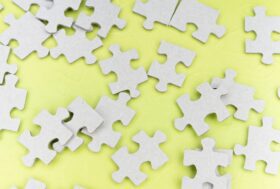Can neuroscience contribute to the science of learning?

The Centre for Educational Neuroscience (Centre for Educational Neuroscience, n.d.), a collaboration between UCL/IOE and Birkbeck, quote a Royal Society Report: ‘Education is about enhancing learning, and neuroscience is about understanding the mental processes involved in learning. This common ground suggests a future in which educational practice can be transformed by science, just as medical practice was transformed by science about a century ago’ (Royal Society, 2011).
The Centre tells us that their researchers are investigating the neural mechanisms of reading, numerical cognition, attention and their attendant difficulties, including dyslexia, dyscalculia and ADHD, as they relate to education.
Geake and Cooper (Geake and Cooper, 2003), excited by such possibilities, described an imaginary future parents’ evening, where a teacher shows a mother that her son has a weak short-term memory circuit for number solutions. The teacher says that this explains the boy’s poor mathematics work. The teacher recommends mental tasks to improve that aspect of the brain’s function.
In recent years, academic journals have featured much research on the neural bases of learning disabilities, such as dyslexia and ADHD. This raises the possibility that a neuroscience-informed way of helping pupils with these conditions to learn may soon be available.
However, I now want to sound some cautionary notes. For the most part I am not commenting on what neuroscientists themselves say about learning. I am talking about others’ hopes for the contribution that neuroscience might make to the science of learning.
Imagine that aliens finally arrive in our solar system. The mother ship pauses in a discreet location, while a small module takes a couple of the visitors, carefully disguised as human beings, down to Earth. They walk along Oxford Street and find a £20 note on the pavement. Intrigued, they return with it to the mother ship and subject it to scientific tests in their laboratories, whose technologies are many millennia in advance of those achieved by human beings. They make a number of discoveries about the chemical and organic properties of the note, the pigments in the print and so forth. Disappointingly, this tells them little about what the £20 note actually is. The aliens need to return to Earth and investigate the complexities of money, value, banks, exchange, economies and too many other things to mention here. These social conventions, facts and institutions have a kind of existence that is sustained because people in a society or culture intend this. Such ‘we’ intentions are often tacit and rarely conscious psychological episodes. They exist for all that.
The Royal Society report talks of neuroscience understanding the mental processes involved in learning. Compare this with our aliens trying to grasp the function of the £20 note by subjecting it to chemical analysis in their advanced laboratories. They need to transferThe processes of applying learning to new situations More their gaze to the complex set of social practices, involving finance, value, exchange, property and so forth, that give the note its identity. Its physical constitution, researchable in the aliens’ advanced laboratories, gives little or no clue as to its real identity, embedded as it is in the social realm created by human beings. The chemical and biological properties of brains, taken alone, cannot tell us, for instance, what a pupil is learning at a given time. We also have to look outside that pupil’s head at language, social conventions, institutions and culture. Needless to say, neuroscientists are just as aware of this as the rest of us. It does suggest, however, that the most promising scientific research into learning will be carried out by teams of researchers. These would be drawn from teachers and educators of a variety of stripes, psychologists and other social scientists and, of course, interested neuroscientists.
Sometimes it looks as if neuroscience should be able to support teachers who are helping pupils with learning disabilities to learn. Even if studying the brain cannot uncover anything to do with the content of learning, it might tell us a good deal about the neural deficits or ‘dysfunctions’ underlying certain learning disabilities.
Yet how sure are we that focusing on ‘neural mechanisms’ is always the right way to research conditions such as dyslexia or dyscalculia? To explore this question, we need a little slice of the history of psychiatry. Around 50 years ago, a movement known as ‘anti-psychiatry’ was making the headlines. Broadly speaking, up to then, psychiatric labels such as ‘schizophrenia’ had been thought to label people suffering from mental illnesses analogous to physiological illness, such as measles or cancer. Just as cancer was a problem in the body of the individual concerned, schizophrenia had been held to be a problem in the mind or the brain. Anti-psychiatrists, such as Laing or Szasz, took a very different view.
From their perspective, psychiatric disorder labels such as ‘schizophrenia’ captured dysfunctional relationships between a patient and their families. The patients did not have an individual problem or illness. Szasz (Szasz, 1960) thought like this. He had explored the possibility that some psychiatric disorders were associated with brain ‘lesions’ of certain kinds. For him, illness had to have a biological foundation. Were brain lesions to have been discovered that were associated with schizophrenia, for instance, he would then have granted schizophrenia the status of a proper illness. However, he did not believe in such lesions and famously concluded that mental illness was ‘mythical’. (We now think that at least some people with a schizophrenia label may have identifiable neurological anomalies. Had Szasz benefited from modern brain scanning technology, he might, after all, have accepted that there were brain lesions of some kind that explained major psychiatric illnesses.)
The possibility of a ‘lesion’ or the equivalent seems to sit well with currently influential ways of viewing learning disorders. Along with many other commentators, Mehan (Mehan, 2014) notes in regard to learning disorders that ‘the dominant mode of representation is psychological/medical. Students are diagnosed as having a “learning disability”, “an educational handicap,” attention deficit disorder (ADD) or “special needs.” These representations place the problem inside the child’s mind or brain.’ (Mehan, 2014) Accordingly, neuroscience looks like a very promising resource for understanding and remediating learning disorders.
However, Papineau (Papineau, 1994) used an analogy with software failure to argue that there might be no type of brain damage or persisting abnormality grounding psychiatric disorders, but rather brain events akin to ‘malfunctioning software’. If my computer’s software is failing to function properly, it would often be a mistake to think of peering inside my machine in the hope of uncovering the equivalent of a silicon chip ‘lesion’. The malfunction could well be instantiated in perfectly functioning circuits. We have to take account of what is outside the computer to find a solution. What was the software meant to be doing? What standards and customs apply to its operation? What social conventions enable us to interpret both what to put into the computer and how it responds? The answers to these questions may well assist us in repairing the software, when replacing a hard disk or a chip would not.
Note a recent research paper where the ‘reality’ of dyslexia is explained in such a way that brain functioning is clearly implicated. Yet Papineau’s software analogy possibility is also left open: ‘Dyslexia… the disorder seems to be the result of a subtle yet significant snarl in the brain’s ability to process information about words.’ (Underwood, 2013) On the one hand, the expression ‘snarl’ could refer to an organic lesion. It might, on the other hand, capture a problem with brain functioning comparable to a software issue, as Papineau suggests. As I understand the nature and reach of neuroscience, it could not of itself identify such ‘software’ failures in the brain.
A recent Cambridge University seminar was entitled ‘Foundations of the educated brain: Infancy and early childhood’. Neuroscientists quite frequently use phrases such as the ‘learning brain’ or the ‘social brain’. The language seems to imply that it is, literally speaking, the brain that learns and can be educated. If so, neuroscience would have to be relevant to what practitioners do in classrooms. One objection to talk of this kind is that it involves what philosophers, following Ryle, have dubbed ‘category mistakes’. A foreigner visiting Oxford sees the colleges, libraries and so on. He then asks where the university is. Ryle comments that he ‘was mistakenly allocating the University as that to which the other institutions belong’ (Ryle, 1949). Similar ‘mistakes’ would be involved if we were to claim that the Prime Minister is a quadratic equation. Brains are in the wrong category to learn. People learn.










